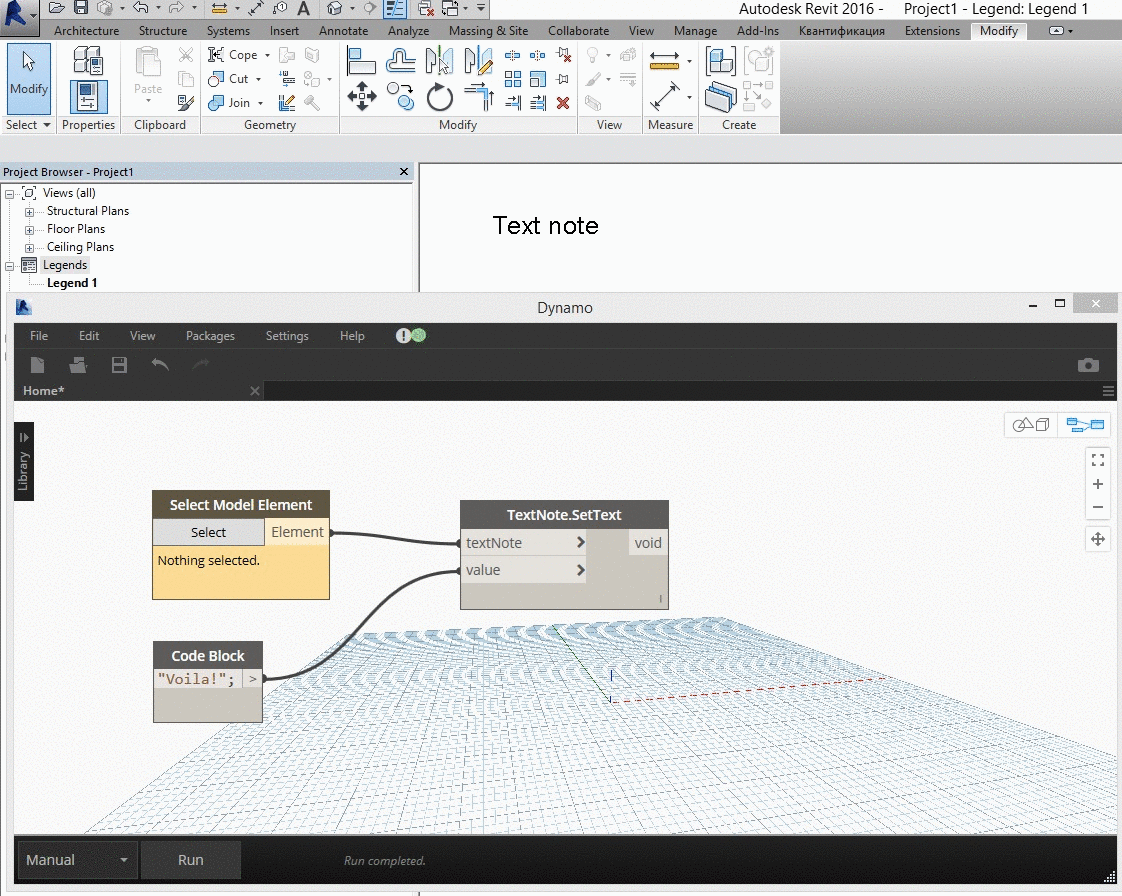A few words about Dynamo and Visual Programming
What is Visual Programming , and why does it generate a lot of hype among AEC professionals? In simple words, Visual Programming lets you build your program by manipulating with graphical elements rather than by specifying them textually. VP basically acts as a mind map, connecting one's design ideas with the software API ("application programming interface") to put design ideas to life. You've probably seen my previous post with the "Hello, World!" image from Dynamo (Dynamo == Open Source Visual Programming Revit addin):

Although this particular script has no practical use (as much as almost all of the introductory samples), it shows that interaction with software via API could be as easy as building a mind map. You are basically 'talking' with Revit, telling it how and what to do by simply joining wires and nodes. And this is how you do it:

Starting from Revit 2017, Dynamo is a builtin app that gives you freedom to build your scripts within Revit environment, interacting with API in the real time. Moreover, Dynamo is Open Source and community-driven technology, which means that it evolves with incredible speed.
What is also important, you do not need to be a programmer (at least for a while) to work with Dynamo and extend Revit capabilities. In my future posts, I'm going to show you some practical uses of Dynamo, and how this technology could help your team boost productivity.
From what I see today, Visual Programming is somewhere on the "Plateau of Productivity" (according to the Gartner Hype Cycle terminology), as more and more companies start using this technology on a daily basis.
And if you work in Revit and still haven't heard about Dynamo, check out these links: